Explaining the ending of Assassin's Creed Mirage & how it ties into Valhalla

With Assassin’s Creed Mirage posed as a prequel to Valhalla, we always knew that the ending was going to tie in one way or another. Those who have finished the game will know that those predictions ring true, with the ending directly relating to Valhalla in more ways than one, and setting up the motivations for Basim as we see him in the Viking era.
While the two games are connected, Mirage is a completely different game to Valhalla, stripping out all the RPG mechanics and taking the series back to its stealthy roots. Here, you’ll spend your time in Baghdad deconstructing the corrupt individuals that have infiltrated the Caliphate, solving Enigma’s, and collecting Dervis’ Artifacts along the way.
Once you do reach the end of Asassin’s Creed Mirage, there are a few story threads that are left a little ambiguous and may need some explaining. So, here’s a full explanation of the Assassin’s Creed Mirage ending, as well as how it all ties into the wider Assassin’s Creed universe.
SPOILER WARNING: This article contains spoilers for both Assassin's Creed Mirage and Assassin's Creed Valhalla.
Assassin’s Creed Mirage ending: Finding the Isu Temple
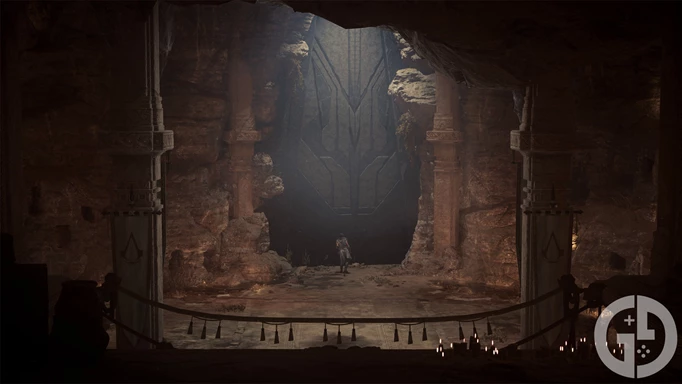
 Click to enlarge
Click to enlargeAfter discovering the Hidden Chamber of the Qabiha, Basim has a final confrontation with the head of the Order of the Ancients. Here, Qabiha reveals that she is the mother of the person that Nehal killed when Basim first touched the Isu Dial in the Winter Temple all the way back at the start of Assassin’s Creed Mirage.
Since Basim was the only person who had been able to activate the Isu Dial, Qabiha had known since then that he had traces of Isu DNA in his ancestry. As such, she tells Basim that Roshan and the Hidden Ones are hiding something from him, and that the answer to his questions will be found hidden beneath Alamut, the hideout of the Hidden Ones.
Just as this information is revealed, Roshan turns up and assassinates Qabiha herself, warning Basim not to go looking for these answers. Of course, Basim disobeys this order and sets out to revisit Alamut with Nehal.
- Read our Assassin's Creed Mirage review to see what we thought of the game
Who is Nehal in Assassin’s Creed Mirage?
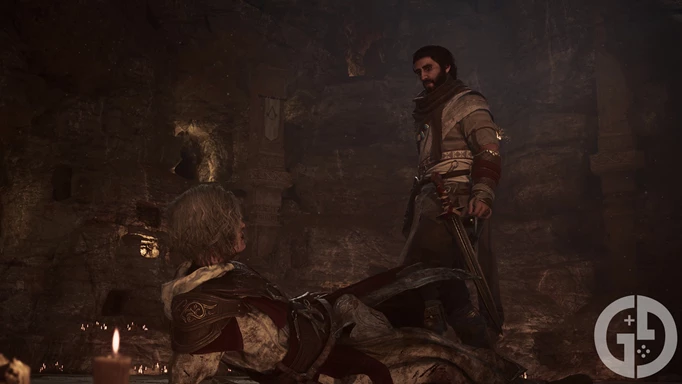
 Click to enlarge
Click to enlargeAfter arriving at Alamut, Basim makes his way to the ceremonial chamber beneath Alamut and finds a hidden door that he’s able to unlock with his blood. This opens the door to reveal a hidden temple that’s clearly of Isu origin. Remember, the Isu in Assassin’s Creed lore are human’s ancient ancestors, wiped out by an apocalyptic event.
It’s at this point when Roshan shows up, and Basim takes her on in a final showdown before besting her in combat. Instead of killing her, Basim lets Roshan live while he heads inside the Isu Temple.
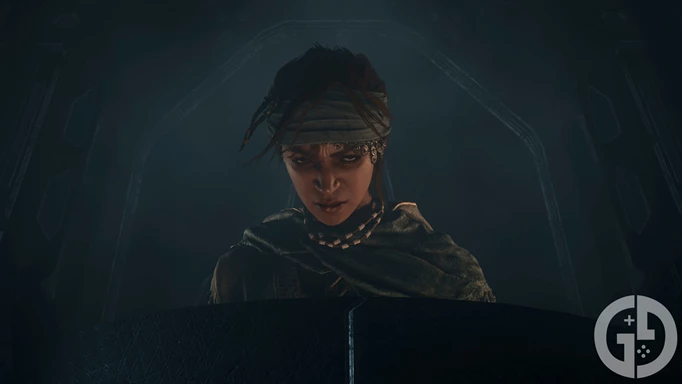
 Click to enlarge
Click to enlargeAfter exploring the Isu corridors, he eventually finds a large piece of machinery with what looks to be a sarcophagus at its base. Upon opening it up, he finds none other than Nehal inside. This is where things start to get a little confusing in Assassin’s Creed Mirage, as it’s not overly clear who Nehal has been this entire time.
It turns out that Nehal isn’t real, and is instead a manifestation of Basim’s imagination throughout the entire story. It explains why Nehal never interacts with any other major characters in Mirage, with Basim actually the one to kill the leader of the Order of the Ancients in the Winter Palace.
How does the ending of Assassin’s Creed Mirage connect to Valhalla?
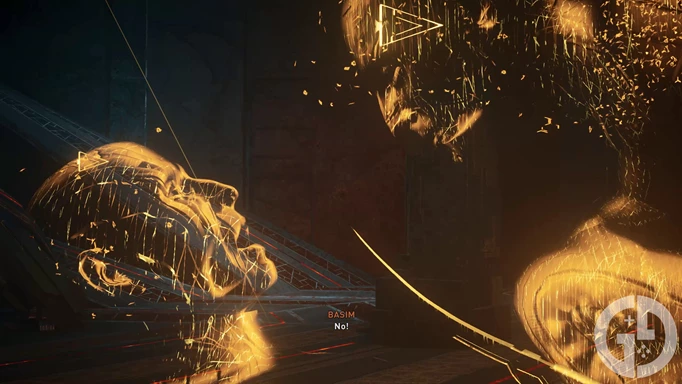
 Click to enlarge
Click to enlargeTo understand the ending of Assassin’s Creed Mirage, we need to recall the events of Valhalla. In that game, we discovered that modern human mythology is all actually based on the real events that occurred during the time of the Isu. Loki, Odin, Thor, Tyr, and even Lady Sif were all real characters that existed during the time of the Isu, and their stories have been passed down through the ages as myths.
The apocalyptic event that wiped them all out was Ragnarok, but the Isu had a clever plan to survive it. They created a machine called Yggdrasil, which would extrapolate their DNA and redistribute it throughout their ancestor's timelines. As such, we learn at the end of Assassin’s Creed Valhalla that protagonist Eivor is actually the reincarnation of Odin. Likewise, Basim is the reincarnation of Loki.
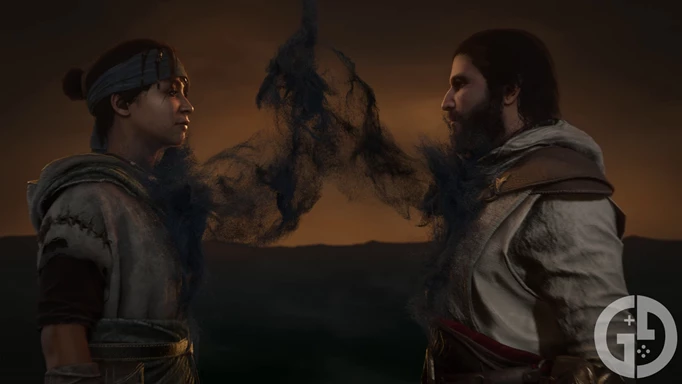
 Click to enlarge
Click to enlargeThis is where the ending of Assassin’s Creed Mirage comes into play. Basim discovers the remains of Loki in the sarcophagus, his long lost ancestor. Upon discovering this revelation, he realises that Nehal is actually the manifestation of Loki in his mind.
You’ll also recall that Basim has been plagued with visions of a Jinni throughout the story of Mirage. In a memory that’s replayed on the Isu Dial, we see a recollection of Loki being imprisoned by Odin. It seems that the Jinni that’s been haunting Basim is actually a twisted memory of Odin as he imprisons Loki for eternity.
After learning all of this, Basim is able to put the pieces together and fully embody the resurrection of Loki, who now takes primary control of Basim’s mind. We can see this demonstrated in one of the final scenes of Mirage. As Basim recalls his eagle Enkidu, the bird rejects him and attacks his face as he flies away.
Finally, we see Basim looking out across the desert, speaking the words: “I shed my skin once, in another time, another place. But I am whole again. I remember. And as for those who thought to bind me, should any of them still walk the earth, I so look forward to our reunion.”
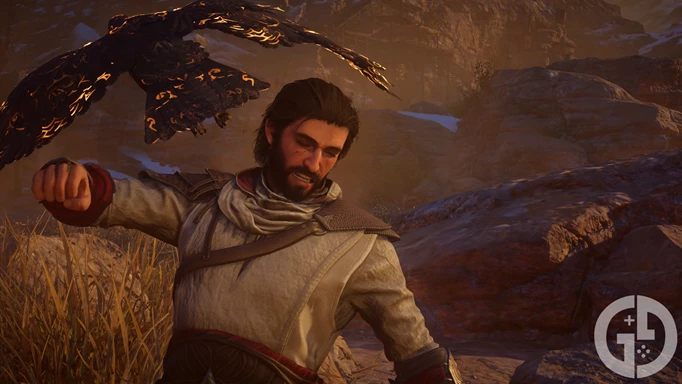
 Click to enlarge
Click to enlargeAgain, this indicates that Loki has fully taken over Basim’s mind, and is actively looking to hunt down the reincarnation of Odin for revenge. This leads us nicely into the events of Valhalla, where Basim meets protagonist Eivor around a decade later as part of the Raven Clan. Although he appears as an ally for much of the game, his true motivations become clear towards the end of the game when he tries to kill Eivor once and for all.
In fact, if you finished the entire Valhalla story, you’ll know that Basim actually re-uploaded himself into an Isu simulation matrix. While Eivor thought that this would kill him, it actually only paused his body clock, preserving him for over a millennium until he’s reawoken in the 21st century by Layla, our modern-day protagonist. As such, Valhalla ended with Basim, the reincarnation of Loki, working with Shaun and Rebbeca as assassins.
Basim’s modern-day motivations aren’t totally clear, and will likely be explored further in a future Assassin’s Creed game. Currently, that stands to be either Project Red or Project Hexe.
So, that’s everything you need to know about the ending of Assassin’s Creed Mirage and how it all ties into Valhalla and the wider Assassin’s Creed universe.
We have plenty more guides on our Assassin’s Creed homepage. Alternatively, why not read our guides on how to find all of the Enigma’s - we’ve currently solved ‘A Challenge’, ‘Surrender’, and ‘Find What I Stole’.
